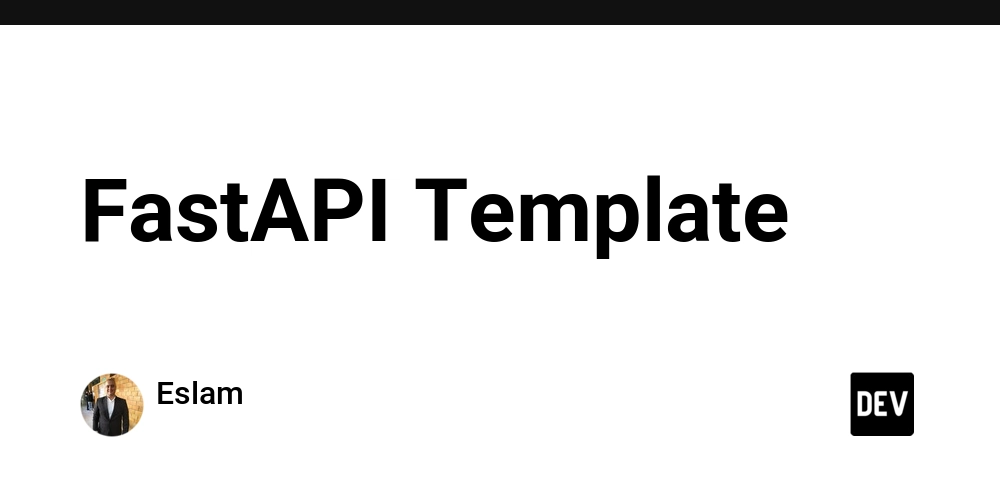I built a crypto data pipeline that streams live Binance prices through PostgreSQL → Debezium → Kafka → Cassandra with sub-second latency. Here’s how it works and the gotchas I hit.
Architecture
┌─────────────┐
│ Binance API │
└──────┬──────┘
│ REST (60s)
▼
┌──────────────┐
│ Python App │
└──────┬───────┘
│ INSERT
▼
┌──────────────┐ ┌───────────┐
│ PostgreSQL │─────▶│ Debezium │
│ (WAL) │ └─────┬─────┘
└──────────────┘ │ CDC
▼
┌───────────┐
│ Kafka │
└─────┬─────┘
│
▼
┌─────────────────┐
│ CDC Consumer │
└────────┬────────┘
│
▼
┌─────────────────┐
│ Cassandra │
└────────┬────────┘
│
▼
┌─────────────────┐
│ Grafana │
└─────────────────┘
Stack
Python • PostgreSQL • Debezium • Kafka • Cassandra • Grafana • Docker
Key Components
1. Binance API Client
params = {"symbols": json.dumps(symbols, separators=(',', ':'))} if symbols else {}
Gotcha #1: Binance rejects JSON with spaces. Use separators=(',', ':') or you’ll get 400 errors.
2. PostgreSQL Setup
Enable logical replication – this is critical:
postgres:
image: postgres:15
environment:
POSTGRES_DB: crypto_db
POSTGRES_USER: postgres
POSTGRES_PASSWORD: postgres
POSTGRES_HOST_AUTH_METHOD: trust
command:
- "postgres"
- "-c"
- "wal_level=logical"
ports:
- "5432:5432"
volumes:
- postgres_data:/var/lib/postgresql/data
zookeeper:
image: confluentinc/cp-zookeeper:7.5.0
environment:
ZOOKEEPER_CLIENT_PORT: 2181
kafka:
image: confluentinc/cp-kafka:7.5.0
depends_on:
- zookeeper
environment:
KAFKA_BROKER_ID: 1
KAFKA_ZOOKEEPER_CONNECT: zookeeper:2181
KAFKA_ADVERTISED_LISTENERS: PLAINTEXT://kafka:29092,PLAINTEXT_HOST://localhost:9092
KAFKA_LISTENER_SECURITY_PROTOCOL_MAP: PLAINTEXT:PLAINTEXT,PLAINTEXT_HOST:PLAINTEXT
KAFKA_INTER_BROKER_LISTENER_NAME: PLAINTEXT
debezium:
image: debezium/connect:2.4
depends_on:
- kafka
- postgres
ports:
- "8083:8083"
environment:
BOOTSTRAP_SERVERS: kafka:29092 # Use internal listener!
GROUP_ID: 1
CONFIG_STORAGE_TOPIC: debezium_configs
OFFSET_STORAGE_TOPIC: debezium_offsets
Important: Debezium must use Kafka’s internal listener (kafka:29092), not the external one.
Registering the PostgreSQL connector:
{
"name": "crypto-postgres-connector",
"config": {
"connector.class": "io.debezium.connector.postgresql.PostgresConnector",
"database.hostname": "postgres",
"database.port": "5432",
"database.user": "postgres",
"database.password": "postgres",
"database.dbname": "crypto_db",
"database.server.name": "crypto_server",
"table.include.list": "public.ticker_24h,public.klines",
"plugin.name": "pgoutput",
"publication.autocreate.mode": "filtered",
"topic.prefix": "crypto"
}
}
5. The Tricky Part: Decoding Decimals
When I first ran the consumer, I got decimal.ConversionSyntax errors everywhere. Turns out, Debezium encodes PostgreSQL DECIMAL values as base64-encoded bytes in JSON.
Here’s how the data looks in Kafka:
{
"payload": {
"after": {
"symbol": "BTCUSDT",
"last_price": "CW/ZvA3A", // This is base64!
"volume": "Az8in0BI"
}
}
}
I had to write a decoder:
import base64
from decimal import Decimal
@staticmethod
def decode_decimal(encoded_value, scale):
"""Decode Debezium decimal from base64-encoded bytes"""
if encoded_value is None:
return Decimal('0')
byte_data = base64.b64decode(encoded_value)
value = int.from_bytes(byte_data, byteorder='big', signed=True)
return Decimal(value) / Decimal(10 ** scale)
# Usage
last_price = self.decode_decimal(data['last_price'], 8) # scale=8
percent = self.decode_decimal(data['price_change_percent'], 4) # scale=4
This was the biggest gotcha. Spent 2 hours debugging this before I checked the Kafka messages directly.
6. Consuming CDC Events
The Debezium consumer subscribes to Kafka topics and replicates data to Cassandra:
from confluent_kafka import Consumer
from datetime import datetime
class DebeziumConsumer:
def __init__(self, cassandra: CassandraManager):
self.cassandra = cassandra
self.consumer = Consumer({
'bootstrap.servers': 'kafka:29092',
'group.id': 'crypto-cdc-consumer',
'auto.offset.reset': 'latest',
'enable.auto.commit': True
})
self.consumer.subscribe([
'crypto.public.ticker_24h',
'crypto.public.klines'
])
def consume(self):
while True:
msg = self.consumer.poll(timeout=1.0)
if msg is None:
continue
event = json.loads(msg.value().decode('utf-8'))
if msg.topic() == 'crypto.public.ticker_24h':
self.process_ticker_event(event)
elif msg.topic() == 'crypto.public.klines':
self.process_kline_event(event)
7. Cassandra for Time-Series Data
Cassandra is perfect for time-series data with its clustering columns:
def _create_tables(self):
self.session.execute("""
CREATE TABLE IF NOT EXISTS ticker_24h (
symbol text,
timestamp timestamp,
price_change decimal,
last_price decimal,
volume decimal,
PRIMARY KEY (symbol, timestamp)
) WITH CLUSTERING ORDER BY (timestamp DESC)
""")
This allows blazing-fast queries like “give me the last 100 prices for BTC” without full table scans.
8. Grafana Dashboards
The final piece is visualization. I provisioned Grafana with both PostgreSQL and Cassandra data sources:
# grafana/provisioning/datasources/datasources.yml
apiVersion: 1
datasources:
- name: PostgreSQL
type: postgres
url: postgres:5432
database: crypto_db
user: postgres
isDefault: true
- name: Cassandra
type: hadesarchitect-cassandra-datasource
url: cassandra:9042
jsonData:
keyspace: crypto_data
Dashboard queries:
-- Top 5 performers (PostgreSQL)
SELECT
symbol,
ROUND(price_change_percent::numeric, 2) as "24h Change %",
ROUND(last_price::numeric, 2) as "Last Price"
FROM ticker_24h
WHERE timestamp = (SELECT MAX(timestamp) FROM ticker_24h)
ORDER BY price_change_percent DESC
LIMIT 5
-- Candlestick data (Cassandra)
SELECT open_time, open_price, high_price, low_price, close_price
FROM klines
WHERE symbol = 'BTCUSDT'
LIMIT 100
Results
Here’s what the running system looks like:
Docker Services:
$ docker-compose ps
NAME STATUS PORTS
postgres Up 0.0.0.0:5432->5432/tcp
cassandra Up 0.0.0.0:9042->9042/tcp
zookeeper Up 0.0.0.0:2181->2181/tcp
kafka Up 0.0.0.0:9092->9092/tcp
debezium Up 0.0.0.0:8083->8083/tcp
app Up
grafana Up 0.0.0.0:3000->3000/tcp
Application Logs:
Starting crypto data pipeline with Debezium CDC...
Starting Debezium CDC consumer...
[2025-11-04 14:19:37] Stored 5 ticker records
[2025-11-04 14:19:39] Stored klines for 5 symbols
[2025-11-04 14:20:39] Replicated ticker: BTCUSDT
[2025-11-04 14:20:39] Replicated ticker: ETHUSDT
[2025-11-04 14:20:40] Replicated kline: BTCUSDT
Data Verification:
PostgreSQL:
crypto_db=# SELECT COUNT(*) FROM ticker_24h;
count
-------
245
Cassandra:
cqlsh> SELECT symbol, timestamp, last_price
FROM crypto_data.ticker_24h
WHERE symbol='BTCUSDT' LIMIT 3;
symbol | timestamp | last_price
----------+-------------------------+-------------
BTCUSDT | 2025-11-04 14:20:37+00 | 103793.97
BTCUSDT | 2025-11-04 14:19:37+00 | 103954.50
BTCUSDT | 2025-11-04 14:16:29+00 | 103888.55
Grafana Dashboard:
The dashboard auto-refreshes every 10 seconds and shows:
- Top 5 cryptos by 24h gain
- Real-time price trends for all tracked symbols
- BTC candlestick chart (from Cassandra)
- Trading volume analysis
Lessons Learned
-
Debezium decimal encoding is brutal – Spent hours debugging before realizing they’re base64-encoded. Always check the raw Kafka messages first.
-
Kafka listener configuration matters – Debezium must use the internal listener (
kafka:29092), not the external one (localhost:9092). -
PostgreSQL needs logical replication – Set
wal_level=logicalor Debezium won’t work. -
Cassandra startup is slow – Added retry logic with 30 attempts @ 2s intervals. Cassandra takes 30-60 seconds to initialize.
-
Docker networking is your friend – Use service names (
postgres,kafka) instead oflocalhostwhen services communicate.
Performance
With this setup:
- Latency: ~500ms from PostgreSQL write to Cassandra insert
- Throughput: Handles 100+ inserts/second easily
- Data Loss: Zero (thanks to Kafka’s persistence)
- Scalability: Can add more Kafka partitions and consumers horizontally
Running It Yourself
Clone and run:
git clone https://github.com/yourusername/crypto-cdc-pipeline
cd crypto-cdc-pipeline
# Start everything
docker-compose up -d
# Check logs
docker-compose logs -f app
# Open Grafana
open http://localhost:3000
# Login: admin/admin
The repository includes:
- Complete source code
- Docker Compose setup
- Grafana dashboard JSON
- Debezium connector config
What’s Next?
Potential improvements:
- Add more crypto symbols (currently tracking 5)
- Implement alerting for price thresholds
- Add data retention policies
- Set up Kafka Connect clustering for HA
- Stream processing with Kafka Streams
Conclusion
Building a real-time data pipeline with CDC isn’t trivial, but Debezium makes it manageable. The key is understanding the data flow and handling the edge cases (like decimal encoding).
This architecture is production-ready and can handle millions of events per day. I’m using a similar setup at work for our financial data pipeline.
Got questions? Drop them in the comments!
Resources
If you found this useful, give it a ❤️ and bookmark for later!



